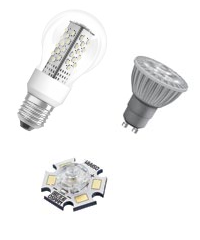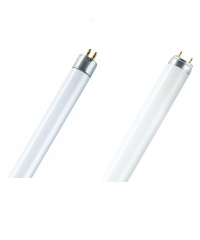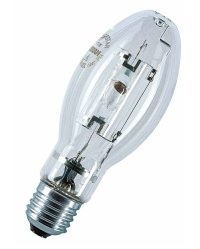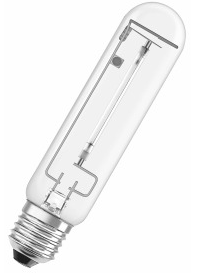Good quality lighting is a necessity for all areas of human activity: This is obvious in the commercial sector as well as in offices, which need good lighting.
However, the craft and industrial sectors also have their own requirements when it comes to ensuring working conditions that offer safety, visual comfort and profitability.
1. Selecting the right type of lighting
Level of lighting required
National workplace safety and compliance standards set out the minimum lighting levels that must be provided. In Luxembourg, it is standard condition ITM CL.55-2 www.itm.lu that imposes the minimum illumination level.
Ensuring sufficient lighting and lighting quality is one mean of preventing accidents at work; it also has an impact on productivity and staff motivation.
Energy efficiency of lamps
The efficiency of light sources is expressed in Lumens per Watt (Lm/W). In other words, the higher the energy efficiency, the more economical the installation, for a given level of lighting.
Quality of emitted light
Different light sources can create different perceptions of the environment at the same lighting level:
The colour rendering index (CRI) measures the ability of a light source to accurately reproduce the colour of illuminated objects:
- 100% equals natural light, the best rendering possible
- 80% is a good value
- CRI below 80% degrades colour perception
The colour temperature describes the shade of light emitted: from "warm white" (similar to an incandescent bulb) to "daylight" (bluish shade).
Type of light fittings
When it comes to choosing new light fittings, functional and aesthetic aspects are often given priority over energy efficiency. However, the choice of light fitting has an impact on energy efficiency owing to:
- the mode of lighting: direct or indirect
- the directionality of the light beam on the surfaces or objects to be lit
- the efficiency of the light fitting is provided by the manufacturer. Keeping old fittings or letting them get dirty affects the overall performance of lighting systems
- the type of ballast for fluorescent lighting; this is also important: older types of electromagnetic ballasts are much less economical than modern electronic ballasts.
Architectural characteristics of the building
- The shape of rooms and the height of the ceiling have an impact on the luminous flux reaching users
- The presence of walls, bulky equipment or stored goods can block the light
- Too dark a wall colour can cause significant loss of light
- The possibility of benefiting from free, high-quality natural light is of course highly desirable
2. Choice of lamps
LED lamps

|
Efficiency: up to 100 lm/Watt |
|
Colour rendering: CRI = …85 (good) |
|
Lifetime: up to 50,000 hours |
|
Applications: |
Fluorescent tubes

|
Efficiency: up to 114 lm/watt (T5) |
|
Colour rendering: CRI = 64…90 (good) |
|
Lifetime: up to 24,000 hours |
|
Applications: |
Discharge lamps (metal halide)

|
Efficiency: 85 to 118 lm/watt |
|
Colour rendering: CRI >90 (very good) |
|
Lifetime: 9,000 to 15,000 hours |
|
Applications: |
Sodium lamps

|
Efficiency: 72 to 150 lm/watt |
|
Colour rendering: CRI < 25 (poor) |
|
Lifetime: 14,000 to 30,000 hours |
|
Applications: |
3. Potential improvements
Behavioural aspects
- Remind staff to turn off the lights in the premises as soon as it is unoccupied
- Reduce the use of lighting when the building is not in use (except for safety-related provisions such as emergency exit signs)
- Only switch on the lighting for occupied workstations
- Make maximum use of the potential of natural, free, high-quality light
Replacement of old lamps
Considering that old incandescent lamps can cost up to 10 times their purchase price in energy costs, exchanging these old lamps for more energy-efficient lighting is often a cost-effective operation.
Carefully select new lighting according to your needs (level of light, quality of light, lifetime) and also replace less efficient light fittings where possible.
How to reduce energy consumption by up to 80% with TL tubes?
Improvement actions and estimated energy conservation in percentages
|
Improvement actions |
Estimated savings |
|
Replace old T8 tube light fittings with modern light fittings, equipped with efficient reflectors and T5 tubes |
approx. 30% |
|
Use quality electronic ballasts, which can reduce operating losses, greatly increase tube lifetime and improve visual comfort |
approx. 20% |
|
Use ballasts with "cut-off" technology that cuts off power to the preheating filament once the tube is lit |
approx. 10% |
|
Time-of-use control by motion sensors in passageways, light intensity control by dimming the lights |
approx. 20% |
Lighting maintenance
Replace light fittings regularly and in good time. With TL and CFL lamps, the light output decreases with the number of operating hours: the required level of illumination can no longer be guaranteed beyond the nominal lifetime. A well-designed renewal campaign will restore nominal brightness or bring the lighting up to standard in an orderly fashion.
It is also advisable to clean the light fittings on a regular basis if they are located in a dirty environment.
